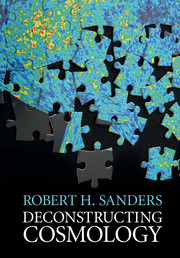Book contents
2 - Three Predictions of Physical Cosmology
Published online by Cambridge University Press: 12 October 2016
Summary
The Basis of Physical Cosmology
The scientific method requires the use of empirical evidence in discerning the nature of the world; one does not rely on folklore, prejudice, tradition, superstition, theology or authority but only upon the evidence that is presented to the senses, most often enhanced by the appropriate instrumentation. Significantly, science is not only observation and classification. The scientist seeks to unify diverse phenomena by a set of rules or theories that are rational, mathematical and general (although perhaps not always obvious or belonging to the realm of common sense). Ideally, theories should make predictions that are testable by repeated experimentation or observation. In this way the theory can be supported or rejected. The underlying assumption is that the world is rational and understandable to human beings, an assumption that appears to be justified by several hundred years of experience.
In physics, the first outstanding application of the scientific method was that of Isaac Newton. Building on the empirical descriptions by Galileo in codifying the kinematics of objects locally, and by Kepler in his formulation of the laws of planetary motion, Newton was able to unify the phenomenology of falling objects on the Earth with that of the planets moving about the Sun by a single law of gravitation combined with basic laws of motion. Newtonian dynamics provides the prototypical example of the scientific method in the steps followed to derive a general theory. The most dramatic early success of Newtonian theory (prediction as opposed to explanation) was its application by Urbain Le Verrier in the mid nineteenth century to predict the existence and position of the planet Neptune, using the observed small deviations in the motion of Uranus from that calculated due to the known massive bodies in the Solar System.
Such predictions form the core of the scientific method, and here I consider the three essential predictions of modern – twentieth century – physical cosmology: the expansion of the Universe; the existence of the cosmic background electromagnetic radiation; and the presence of small angular fluctuations in the intensity of that radiation. These are true predictions. They arose from theoretical considerations before being confirmed by observations, and as such, they form the backbone of physical cosmology.
- Type
- Chapter
- Information
- Deconstructing Cosmology , pp. 12 - 27Publisher: Cambridge University PressPrint publication year: 2016



